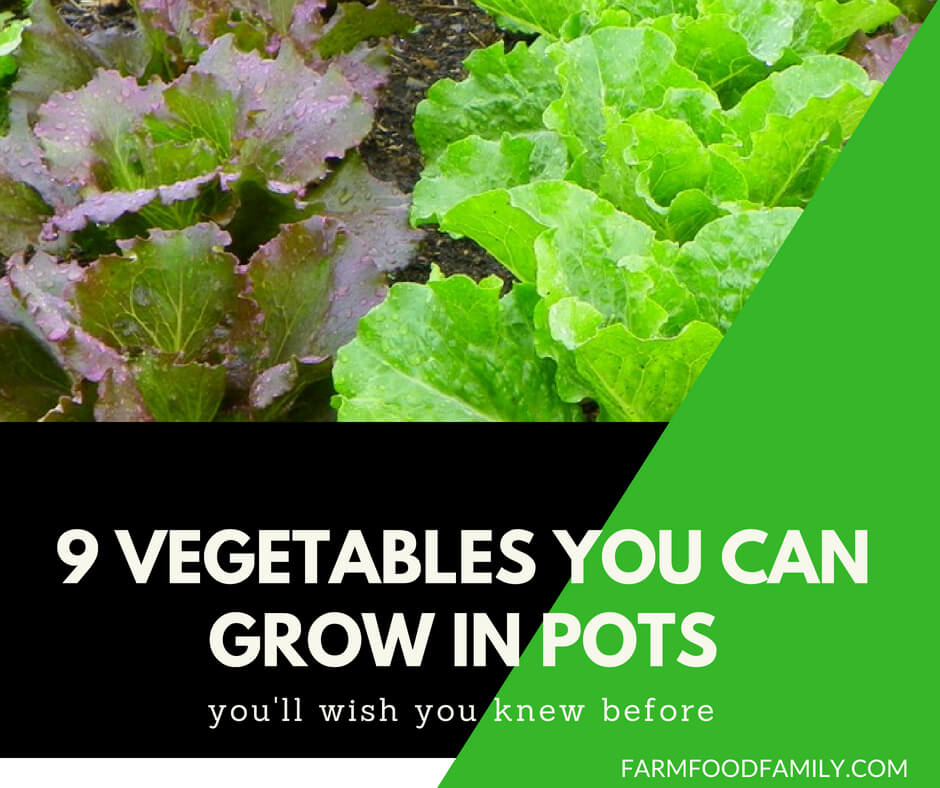Do you want to grow vegetables without the need for raised garden beds or planting rows?
Well, we’ve got the solution for you. To save on space, why not grow them in pots?
You’ll be having a bountiful harvest in no time as long as you know which ones to grow. To help you pick the best crops, we’ve identified the top 9 vegetables you can grow in pots.

1. Beets

First, we’ve got the beet plant, which is mainly grown for its roots and leaves. This is because beetroots are rich in iron, folate, and magnesium. Each seed cluster contains about four to five seeds.
Thus, sowing one cluster in a one-gallon pot could give you as many as five beet crops. However, this depends on how many can germinate.
2. Carrots

If you have many small pots, you can opt for baby carrots. These are harvested before they reach maturity to get their sweet flavor.
On the other hand, get deep and sizable pots for growing regular-sized carrot variants. Regardless, we recommend applying compost to the potting soil. This will encourage growth and help the roots grow in a straight direction.
3. Lettuce

Lettuce is arguably one of the most common vegetables included in a fresh salad. Thus, it’d be great if you can grow your own.
Apart from the fact that they grow pretty quickly, lettuce crops grown in pots don’t take much space. Do not sow the lettuce seeds deeply since this will make it difficult for them to germinate.
Grow these vegetables in winter if you live in a warm region. Otherwise, you should sow the seeds early in spring.
4. Kale

Homeowners residing in cold regions should try growing kale. These have a high tolerance for the cold and they are very nutritious. Kale has a great amount of fiber, calcium, iron, magnesium, and vitamin C.
Some of the varieties you can grow in pots include the Red Russian Kale and the Dwarf Blue Curled Kale. Also, consider applying some compost mixed with poultry manure.
Here’s a video of growing kale in a pot:
5. Potatoes

Potatoes aren’t difficult to grow in pots, but you must sufficiently irrigate them. Failure to water them enough will lead to smaller harvests. Furthermore, do not plant them if the last frost has yet to arrive.
Place the pots where they can receive eight hours of sunlight. In addition, apply a slow-release fertilizer to the free-draining soil mixture.
6. Radish

Radishes grow pretty quickly in pots. Varieties including the French Breakfast radish and the Cherry Belle radish can thrive in pots and they can be harvested in a just a month.
Each crop should be at least three inches apart from each other. A pot with a six-inch depth is enough for regular-sized crops while pots 10 inches deep work better for bigger varieties of radish.
7. Spring Onions

Also known as scallions, these crops are best grown in temperatures ranging from 10 to 20 degrees Celsius during spring or fall. Place some potting mix in the pot before adding a thin layer of fine soil.
Afterward, scatter the seeds around and cover them with another layer of soil. Thin the spring onion plants after five weeks to help them grow properly.
8. Spinach

This leafy green is a fantastic choice due to its nutritional content that includes vitamin A, potassium, folic acid, and lutein. Spinach can thrive with just partial sunlight, but only if the soil and pots are chosen well.
The ideal soil pH is between 6.0 and 7.0. Moreover, the pots should have a minimum depth and width of six inches. Keep the seeds one inch from each other and thin them accordingly as they grow.
9. Tomatoes

Finally, tomatoes should receive six to eight hours of direct sunlight. Pots of tomatoes can be placed together, but not to the extent that the leaves come in contact with each other.
Keeping them in one place provides additional shade to the root areas of tomato plants in the central pots. Pick pots with a two-foot diameter and apply a layer of mulch to sustain moisture.
Overall, growing vegetables is an option that every homeowner should definitely consider. It’s an efficient way to ensure a bountiful harvest. We hope that our list helped you pick a crop to grow. If you have any questions, do send us a comment.

